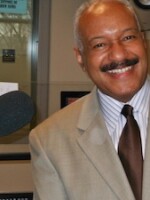It is more than fitting that we honor and celebrate “the First Lady of Song” Ella Jane Fitzgerald in April, the month of her birth and also the month designated as “Jazz Appreciation Month” in 2001 by the Smithsonian’s National Museum of History.
2017 marks not only the above mentioned milestones, but it is also the year of the Centennial Celebration of 100 years Of Ella, with tributes, concerts and observances taking place all over the world. Fitzgerald’s accurate, smooth, wide-ranging voice earned her more than 13 Grammy awards and sold over 40 million albums. Performing in venues all over the world to admirers of every religion, race, social and economic strata, her audiences were said to be as diverse as her vocal range.
Fitzgerald was born in a racially mixed neighborhood in Newport News, Va. She escaped from a reformatory school where she spent a brief time after becoming despondent over the passing of her beloved mother. Fitzgerald described the period as an experience that helped her gather emotions for interpreting the songs she sang. She knew what struggle was really about.
After frequent train rides to Harlem to hear music, Fitzgerald’s name was drawn randomly to perform as a dancer in the legendary Apollo theatre armature night. After much trepidation, Fitzgerald soothed the murmurs from the rowdy crowd by instinctively changing her presentation to singing. Instantly, she had the crowd calling for more! Fitzgerald found that once on stage, “she had no fear.” She said: “I knew I wanted to sing before people the rest of my life…”
Fitzgerald entered multiple talent contests and sang at every opportunity. Eventually, she met the famous Baltimore big band leader and drummer Chick Webb. Chick hired her for $12.50 per week and she soon was thrilling audiences at Harlem’s Savoy Ballroom and all the major venues.
By 1938, Fitzgerald was 21 years old and recorded her first million seller “A Tisket A Tasket,” which stayed on the charts for 17 weeks. After the passing of Chick Webb in June of 1939, the band was re-named “Ella Fitzgerald and Her Famous Band.” It was during that time that she began to perfect her “scatting” skills while admiring the sounds of the bands saxophone section. She said: “I stole everything I ever heard, but mostly I stole from the horns.”
Fitzgerald married her bass player Ray Brown, who was working with Norman Granz and the “Jazz At the Philharmonic” tour. Norman immediately saw Fitzgerald’s international star potential and became her manager, taking her around the world and producing her infamous “songbook series” from 1956-1964. In the songbook series, Fitzgerald recorded covers of other musicians from Duke Ellington to Gershwin, Irving Berlin, Johnny Mercer, Rogers & Hart and more.. Ira Gershwin once said: “I never knew how good our songs were until I heard Ella sing them.”
Ella Fitzgerald’s non-stop touring schedule and the frequent TV appearances on every show that was worth watching took its toll on the marriage, which ultimately ending in divorce in 1952. But she and Ray Brown continued to remain the best of friends.
Fitzgerald recalled many fun road stories, as well as the many racially motivated hate experiences. She was once arrested with Dizzy Gillespie and friends and hauled off to jail, only to be asked for autographs by the arresting officers.
Touring 40 – 45 weeks a year, Fitzgerald performed extensively with Benny Goodman, Frank Sinatra (“complex contractual issues” were cited as the reason Sinatra & Fitzgerald never recorded together in spite of his adoring her), Louis Armstrong, Duke Ellington and Billy Strayhorn, recording with pianist Tommy Flanagan, guitarist Joe Pass, Wash. DC bassist Keter Betts, Count Basie, Oscar Peterson, Herb Ellis, and Quincy Jones. Fitzgerald was booked at the exclusive Macambo Club at the insistence of actress Marylyn Monroe who assured the owner that if he booked Fitzgerald, she (Monroe) would be at the front table every night. After that Fitzgerald never had to play a small club again.
In 1974 Fitzgerald was inducted into Downbeat magazine’s Hall Of Fame and she received Kennedy Center honors for her continuing artistic contributions. In 1976 president Ronald Reagan awarded Fitzgerald the National Medal of Arts and France followed with their Commander of Arts Letters Award. Fitzgerald received numerous honorary doctorate degrees.
In September of 1986, Fitzgerald was diagnosed as a diabetic after undergoing quintuple coronary bypass surgery. Despite failing eyesight and warnings from friends and family, she returned to an extensive touring schedule.
By 1991 Fitzgerald performed her last of 26 appearances at the famed Carnegie Hall. She suffered increasingly from diabetes, and had to have her legs amputated below the knee. She never fully recovered from the surgery. She passed away on June 15, 1996, in her Beverly Hills home at the age of 79.
Ella Fitzgerald was the first African American woman to win at the Inaugural Grammy award show. Other achievements include:
Presidential Medal of Freedom, George & Ira Gershwin Award for Lifetime Achievement, Theatre in Newport News, Va. Named after her, a bronze sculpture in Yonkers, NY, US Postal Service stamp in 2008.
“ I guess what everyone wants more than anything else is to be loved. And to know that you loved me for my singing is too much for me. Forgive me if I don’t have all the words. Maybe I can sing it and you’ll understand…”






